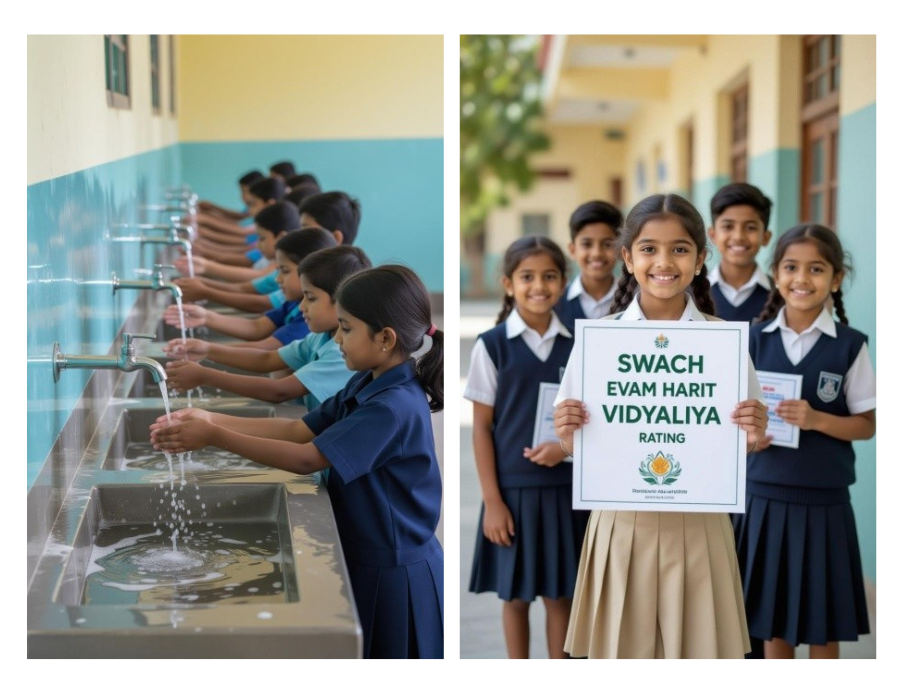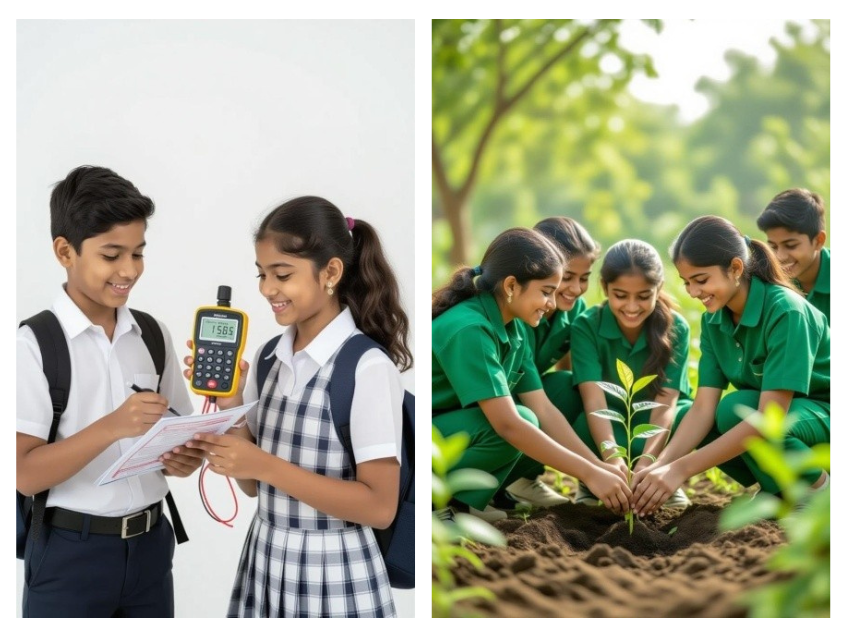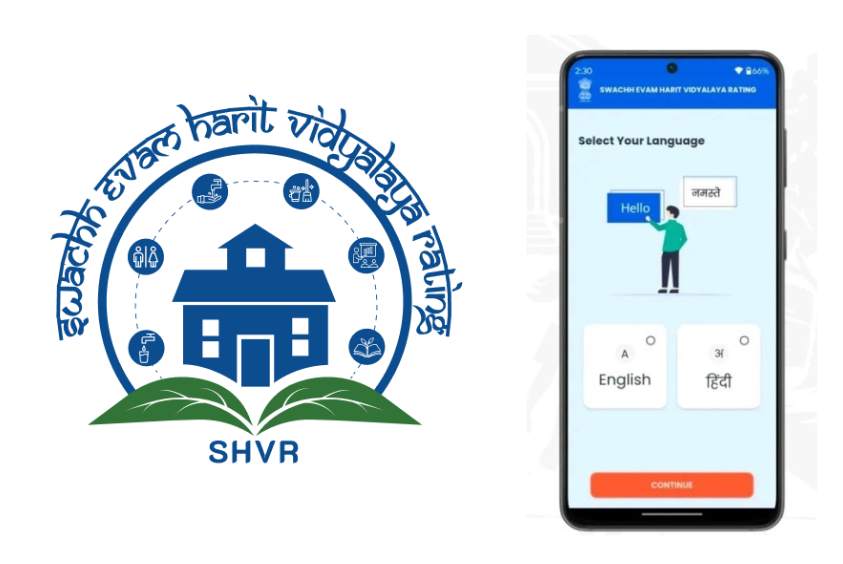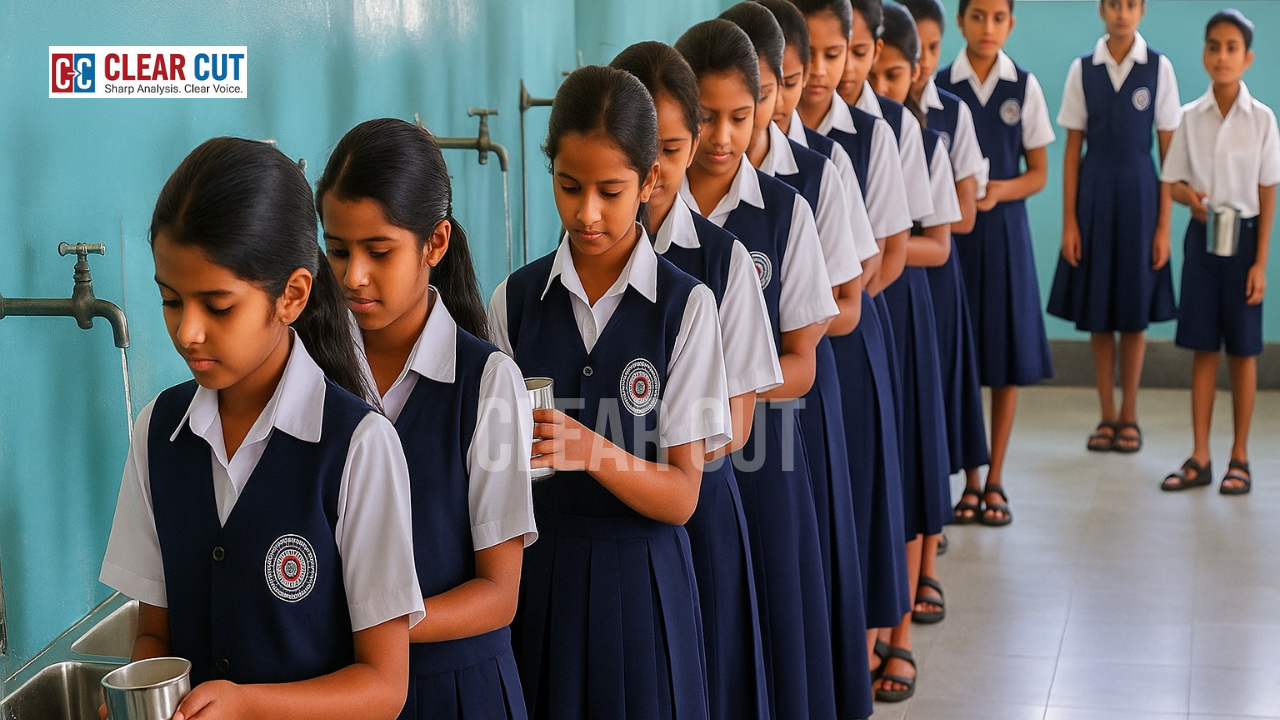Photo Credit: Parinita Mathur
Clear Cut Climate Desk
New Delhi, UPDATED: Sep 03, 2025 05:57 IST
Written By: Antara Mrinal
At 10:15 AM, the handwashing bell rings at a government school in Kendrapara. Steel mugs clink, a long queue forms, and the middle-school eco club, with badges cut-out from old chartpapers, rushes to check whether every tap runs and every soap tray is refilled. It’s not one-off drive, it’s a policy, a practice, and a pride of the school competing in the Swachh Evam Harit Vidyalaya Rating (SHVR) 2025-26, India’s new clean and green scorecard for schools.

Swachh Evam Harit Vidyalaya Rating is not just about clean campuses, but about nurturing healthy, sustainable habits that empower every child to learn, live, and lead with dignity.
What is SHVR?
Swachh Evam Harit Vidyalaya Rating (SHVR) is not another one-day cleanliness rally. It’s a mandatory, digital rating for all schools with a UDISE code to be completed by September 30, 2025, via a web portal or a smartphone app. Schools will self-assess on sixty indicators across six themes – Water, Toilets, Handwashing with Soap, Operation & Maintenance, Behaviour Change & Capacity Building and Mission LiFE actions. Submissions are verified at district, state and national levels, and schools receive a star rating with recognition for top performers.
The scale is historic as a Minister DO letter notes that SHVR will build a WASH and Mission LiFE database for about 14.75 lakh schools with almost 24.8 crore students – a first-of-its-kind national hygiene and sustainability snapshot.
For Odisha, this is not just a compliance, it’s a leverage. The CBSE circular formally copies state bodies like the Odisha Adarsha Vidyalaya Sangathan, signalling alignment and support. Schools in Odisha are using SHVR’s structure to formalize what many already began after cyclones and floods, like safe drinking water corners, menstrual-friendly toilets, scheduled handwashing, composting pits, kitchen gardens, and student audits that make habits stick.
From Checklists to Children’s Lives
Odisha’s schools are steadily building safer and greener campuses by aligning with the CBSE Academic SHVR themes. They guarantee water security by testing sources and upholding storage hygiene, which leads to fewer stomach upsets and therefore more time in class. At the same time, they grant dignified sanitation by maintaining separate, functional toilets with appropriate supplies and disposal systems, thereby improving attendance, especially for adolescent girls.

Ensuring every child has access to safe drinking water in school is not merely an infrastructure goal, but a commitment to health.
Alongside these efforts, they promote healthy habits by ringing a bell that prompts regular hand washing with soap, turning sanitation from poster slogan into a lived routine. They also foster an upkeep culture by maintaining repair logs, encouraging student audits, and allocating funds for minor fixes, which together convert infrastructure into reliability. Moreover, student leadership is strengthened as eco-clubs collect evidence, nudge peers, and share updates in assemblies, which cultivates a sense of shared responsibility.

When students read water and energy meters or turn waste into compost, they are not just learning skills but embracing responsibility for a sustainable future.
Finally, schools integrate Mission LiFE actions such as meter reading challenges, plastic audits, and composting, and in doing so, they transform climate awareness into daily routines that students carry beyond the school gates.
What’s new (and powerful) about SHVR?
Every school must participate by September 30, 2025, ending the patchwork problem of voluntary schemes. Along with that, the NCERT-published SHVR app (100K + downloads) supports online entry, photo evidence, bilingual help, and structured verification, which collectively reduced the “paper trophy” syndrome. The daily micro-actions like refill stations, segregation, water-meter reading, plastic-less events, are now scored.

The SHVR app is a bridge that empowers schools to track, transform, and celebrate their journey towards hygiene, sustainability, and student well-being.
Incentives and Recognition
To keep the momentum high, the Ministry has announced that the top 200 schools across India will each receive an incentive of ₹1 lakh, a sum earmarked for the escalation of essential infrastructure such as safe drinking water facilities, functional toilets, composting pits, or solar-powered initiatives. This financial support is not just a reward; it also allows schools, especially those in resources-constrained areas, to convert plans into tangible developments that directly benefit students’ health and knowledge. In addition, states and districts will be formally recognized for superiority, ensuring that the attention does not fall only on individual schools but also on the ecosystems of governance and sustenance that make such achievements promising. The Ministry also plans to systematize exposure visits for school leaders, creating spaces where principals and teachers can see first-hand how peers are executing SHVR benchmarks. This approach turns innovation into replication, as good practices no longer remain isolated but ripple outwards through peer-to-peer learning.
Why This Is Bigger Than a School Prize?
Public health and climate resilience start with the basics. SHVR’s indicators align directly with learning readiness and climate literacy like water conservation, waste segregation and biodiversity in the campus. If Odisha’s schools keep treating SHVR as a live toolkit rather than one-time audit, they’ll be graduating a cohort that sees sustainability not as a chapter, but a timetable.




